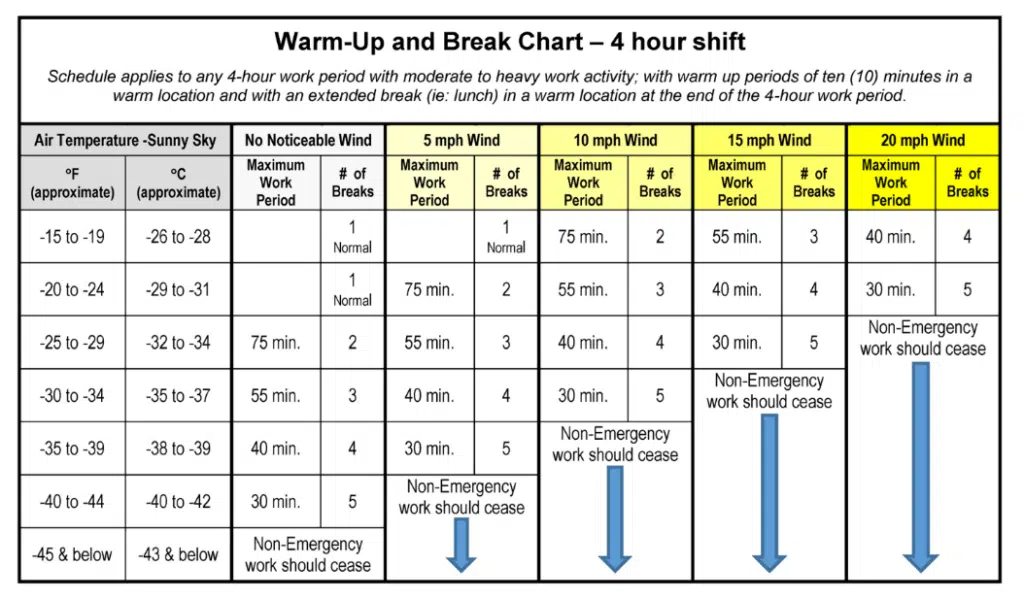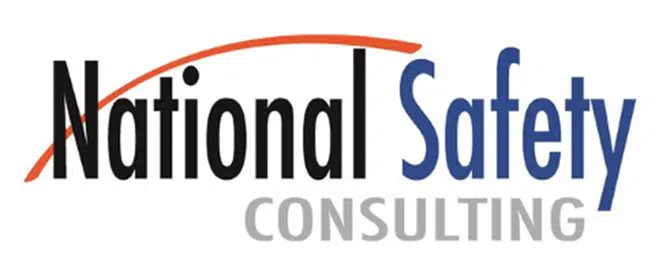Exposure to freezing and cold temperatures for extended periods of time may cause serious health problems such as trench foot, frostbite, and hypothermia. In extreme cases, including cold water submersion, exposure can lead to death. Danger signs include uncontrolled shivering, slurred speech, clumsy movements, fatigue, and confused behavior. If these signs are observed, call immediately for emergency help. Tips on how to protect employees include:
- Recognize the environmental and workplace conditions that may be dangerous.
- Learn the signs and symptoms of cold-induced illnesses and injuries and what to do to help employees.
- Train employees about cold-induced illnesses and injuries.
- Encourage employees to wear proper clothing for cold, wet, and windy conditions, including layers that can be adjusted to changing conditions.
- Be sure that employees in extremely cold conditions take frequent, short breaks in warm dry shelters to allow their bodies to warm up.
- Try to schedule work for the warmest part of the day.
- Avoid exhaustion or fatigue because energy is needed to keep muscles warm.
- Use the buddy system: Work in pairs so that one employee can recognize danger signs.
- Drink warm, sweet beverages (sugar water, sports-type drinks) and avoid drinks with caffeine (coffee, tea, sodas, or hot chocolate) or alcohol.
- Eat warm, high-calorie foods such as hot pasta dishes.
Remember that employees increase their risks when they take certain medications, are in poor physical condition or suffer from illnesses such as diabetes, hypertension, or cardiovascular disease.

